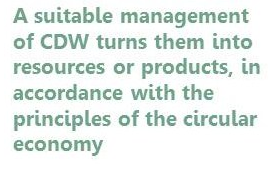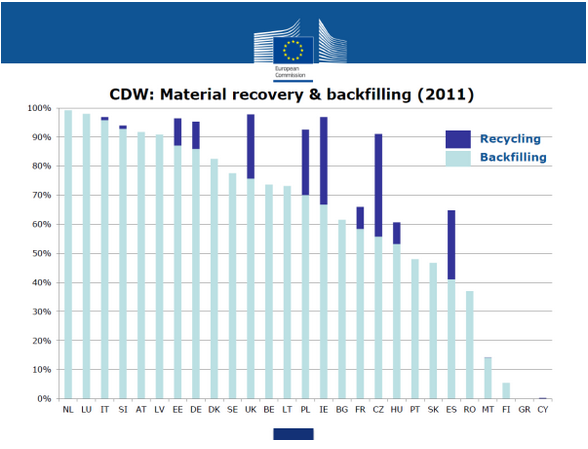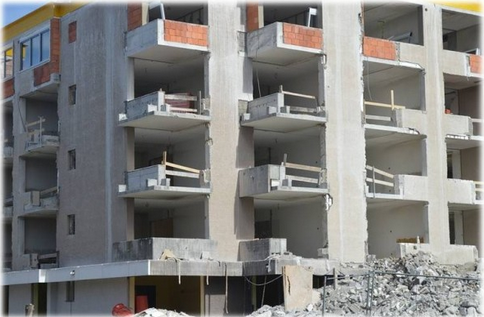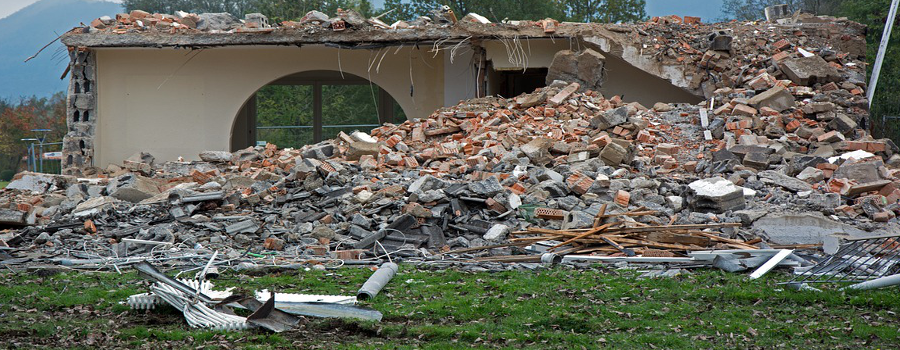Construction and Demolition Waste (C&D Waste or CDW) includes all the waste from the construction of new buildings, demolition of old ones and small refurbishment works. The generation and management of CDW is a serious environmental problem. Neglect or mismanagement produce negative impacts and can cause water, ground and air pollution, contributing to climate change and affecting ecosystems and human health.
Current regulations on CDW management determines the need for an ex-ante estimation of the debris type and volume a project will generate. The level of detail and accuracy should be adequate to allow an effective planning to carry out the management of this waste.
Concern about the amount of CDW generated and its environmental impact is growing. For this reason, governments and public authorities are reviewing their policies on how these wastes should be managed. In order to improve this management, it is necessary to know the composition and magnitude that should be dealt with, as well as some estimating method of waste generated in a project, in a region or a country.

Despite all the problems that CDW may cause, and difficulties on their treatment, when waste is properly managed become resources, or products that contribute to saving raw materials, conservation of natural resources, avoid climate change and thus to sustainable development, in accordance with the principles of the circular economy.
How to estimate the waste generated by construction and demolition activities varies significantly from place to place, as explained below.
America
In the United States, USEPA (US Environmental Protection Agency) estimates the amount of CDW generated in a specific region only from the built-up area, but regardless of whether the building is residential or not, or whether the works are new construction, refurbishment or demolition, which influences the type and amount of produced waste.
Another interesting case is Brazil, because it is an emerging country but CDW legislation is very similar to the European one, particularly the Portuguese. In this country, the civil construction sector is an important waste generator and national laws require manufacturers to take responsibility for the waste generated in their work and planning their management. A very important part of this effort is waste estimate to be generated, differentiating by waste type (brick, wood, glass, etc.) as each need a suitable deposit space and will be treated differently.
Asia
The situation in Asia varies greatly from one country to another. Except for Korea and Japan, lack of knowledge and awareness of efficient building practices results in natural resources overuse and generation of large amounts of CDW that is rarely recycled. Approximately 40% of the total generated waste comes from construction and demolition activities. This waste is difficult to manage because it is heavy and bulky and can not be incinerated or used for composting.

Europe
The European Union, in the EWC (European Waste Catalogue) provides a classification of the CDW by category. According to statistics, there are huge differences in recycling and recovery rates between EU countries, between less than 10% and over 90%. In Spain, recycling rate is around 65% of generated CDW. Construction companies benefit from the reduced amount of generated waste by reducing landfilling associated costs and reducing raw materials purchasing budget.
CDW Management in Spain
Most of not recycled waste, at best, goes to landfills, taking up large discharge spaces and causing faster filling. In Spain, CDW estimation is usually done based on the floor area. To estimate each type of waste amount, a widespread criterion is 20 cm tall mixed waste per m2 built, according to use, with a standard density from 0.50 t/m3 to 1.50 t/m3. In order to obtain the weight by waste type, data based on studies about the composition of the CDW going to landfill could be used.
Summarizing, research in this field has focused in two ways: “hard” methods, measuring waste produced directly on site or through the weight of the trucks leaving the work, and “soft” methods, through questionnaires, interviews and surveys of experts and workers. When dealing with waste generation rates forecast, two approaches have been found. First is sorting waste into different categories, e.g. those established by the EWC. The second is managing waste as a whole and estimating the total volume.

A realistic approach to the problem undertakes to manage the project as a large number of interrelated and different task types (project units), in which each of these works affects differently in waste generation. Similarly, if forecasting models are developed based only on available historical data, without the necessary preliminary analysis and processing, a significant error could be introduced, as this information can come from heterogeneous and unevaluated sources.
Thus, analysis and thorough evaluation of all available information, complemented with expert information, is mandatory. Construction sector should incorporate these sustainability criteria, which will contribute to a better separation of waste in future C&D projects, a greater waste reuse and recycling degree, and therefore a reduced environmental impact.
- Why monitoring rural territories - 28 March 2025
- Monitoring the Effect of Cultural and Natural Heritage as a Driver for Rural Regeneration - 8 April 2022
- Building railway infrastructure with less pollution - 25 May 2018
